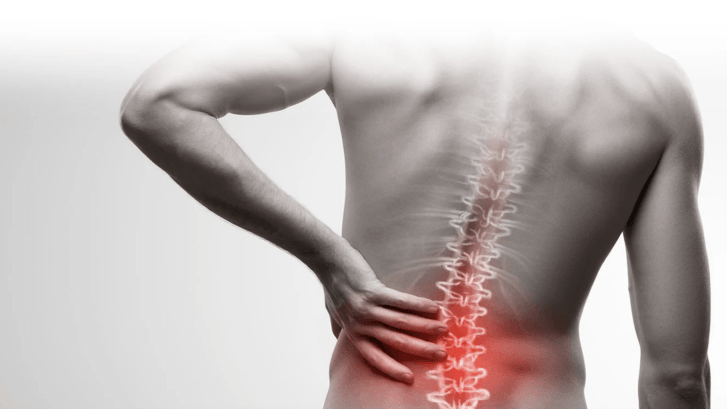Best Ways to Treat Lower Back Pain
Whatever the cause of your low back pain—lifting your child, the wrong tennis move, or (often) no reason you can recall—what you want is relief: now!
Our concierge primary care doctors in Jupiter understand because we’ve been there. In fact, it’s estimated that at some point in our lives, 80 percent of us will seek medical attention for that searing pain that flares every time we move.
So we were pleased to learn of a new study that looked at the best medications for treating lower back pain. And there are other ways to treat the pain without drugs, which we’ll explore below.
The Latest Research
The study, published last month in the Journal of Orthopaedic Research, found that the best medications for acute lower back pain was a combination of a non-steroidal anti-inflammatory NSAID) drug and a prescription muscle relaxant. Acute lower back pain is defined as pain that lasts no longer than 12 weeks; chronic back pain lasts longer.
Researchers reviewed 18 randomized clinical trials that looked at various analgesics, including aspirin, acetaminophen, and NSAIDs (ibuprofen, naproxen, and celecoxib). The NSAID/muscle relaxer combination relieved pain and disability the fastest, often within one week.
The main drawback, of course, is that muscle relaxants—which actually tend to relax the whole body rather than just muscles—cause sleepiness, meaning they can’t be taken while driving or trying to function normally throughout the day.
And—as with all drugs, whether over-the-counter (OTC) or prescription—each drug comes with the possibility of side effects, including indigestion, dizziness, liver damage, and internal bleeding, among other risks.
Harvard Health Publishing notes that other drug treatments are also available for those whose pain isn’t helped by analgesics, or becomes more severe.
This includes opioids as a last resort, which are generally safe when taken for a short period and monitored by a doctor.
Certain antidepressants can also be prescribed off-label to treat pain, even if the person is not depressed.
Non-drug Approaches
Because of the risks associated with drug therapy, many people look to alternative methods to help relieve their pain.
Matthew Solan, the executive editor of Harvard Men’s Health Watch, mentions several options.
Cold and heat therapies can work by starting with ice packs immediately following the onset of pain to reduce swelling, followed by a heating pad or a hot-water bottle to relax muscles and increase blood flow.
Limited bed rest, although recently fallen out of favor as the preferred treatment for back pain, can still be helpful if the pain is so severe that it hurts to sit or stand. Try to limit it to a few hours at a time, however, and for no more than one or two days.
Physical activity can not only help build strong muscles that are less prone to injury but can also help the healing process.
Complementary therapies, often thought of as “woo-woo nonsense,” have been shown to offer relief in many cases. They include:
- acupuncture, in which needles inserted in precise points on the body are said to release blocked energy suspected of causing pain
- spinal manipulation, in which chiropractors apply pressure to the body to correct spinal alignment
- therapeutic massage to relax aching muscles
- movement therapies such as yoga and tai chi
Another Non-traditional Approach
Nearly 40 years ago, the late back pain physician John Sarno proposed an entirely different approach to treating chronic lower back pain, and eventually pain of all sorts. He claimed that much of the pain was caused by the brain trying to repress unwanted or frightening emotions and that once this was acknowledged, the pain would resolve on its own.
This is a vast oversimplification of his theory, of course, and over the years has been vehemently rejected by pain sufferers who thought he was saying their pain was “all in the head,” which was not his message. Anyone who is familiar with the concept of mind-body medicine will understand the connection between the brain and what happens in the body.
Although the medical community has been slow to warm up to Sarno’s approach, two recent studies tend to lend credence to his theory.
One, published in the journal JAMA Psychiatry in 2021, was a randomized, controlled trial of 151 patients using an approach based on Sarno’s work: “pain reprocessing therapy,” or PRT, which taught patients to reinterpret their pain as a neutral signal from the brain. Researchers found that 98 percent of participants had at least some relief from their pain; 66 percent were nearly or fully pain-free, compared with 10 percent of the control group.
Another study, published the same year, found similar results to Sarno’s approach.
If you’re interested in pursuing this form of treatment, Sarno’s books are readily available online. Although he offered in-person counseling when he was alive, he also claimed that simply reading his books, which explained the theories behind his treatment, worked for many.
A Final Word
Finally, if you have persistent or severe lower back pain, it’s important that you let us know because it could be a symptom of something serious.
Dr. Akhil Chhtre, who specializes in back pain at the Johns Hopkins Department of Physical Medicine and Rehabilitation, cautions that “in some cases, pain is your body’s way of telling you that something isn’t right.”
He says it could be sciatica, kidney pain, or even cancer (especially prostate cancer). So it’s important to have persistent lower back pain checked.

